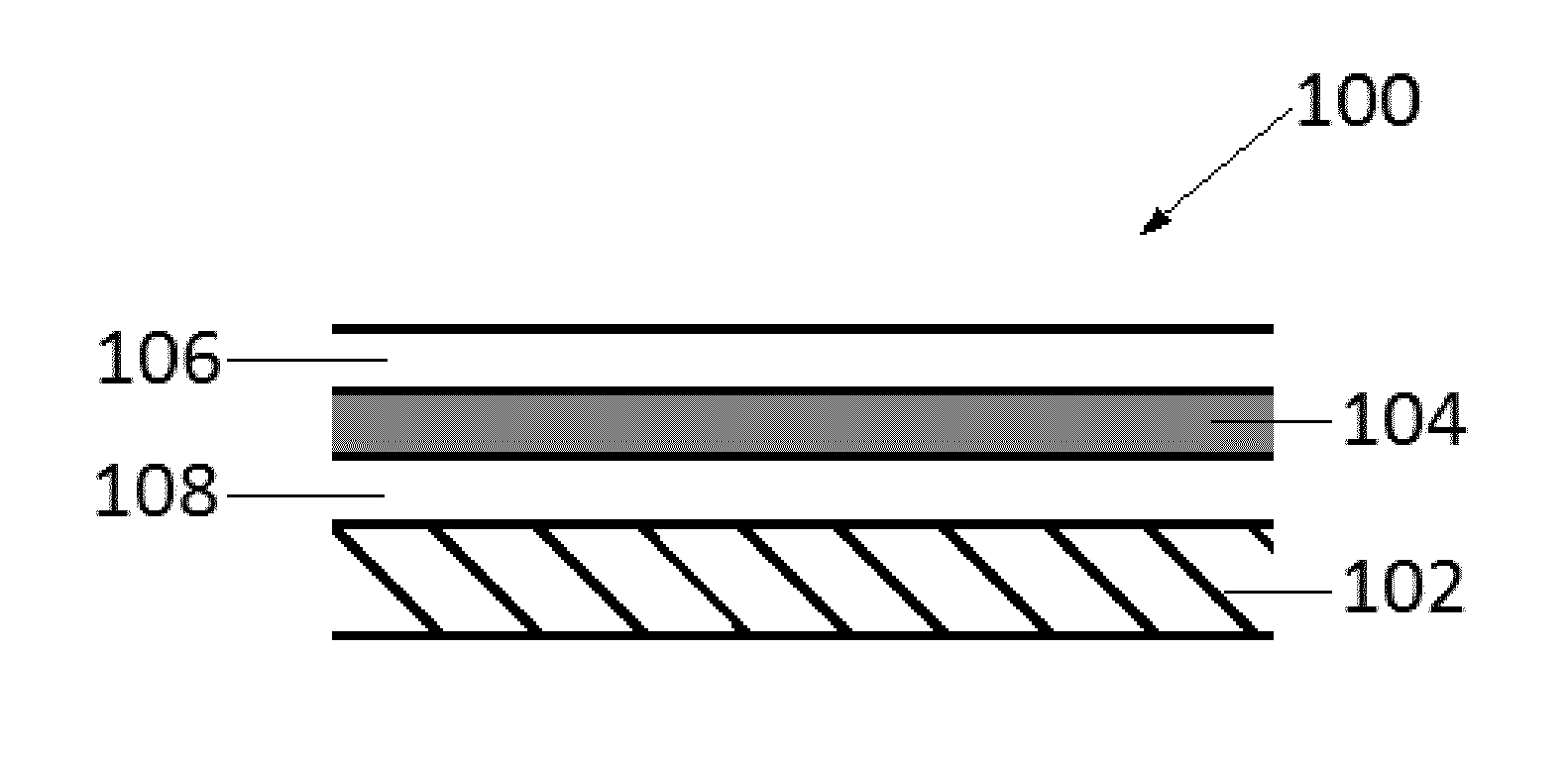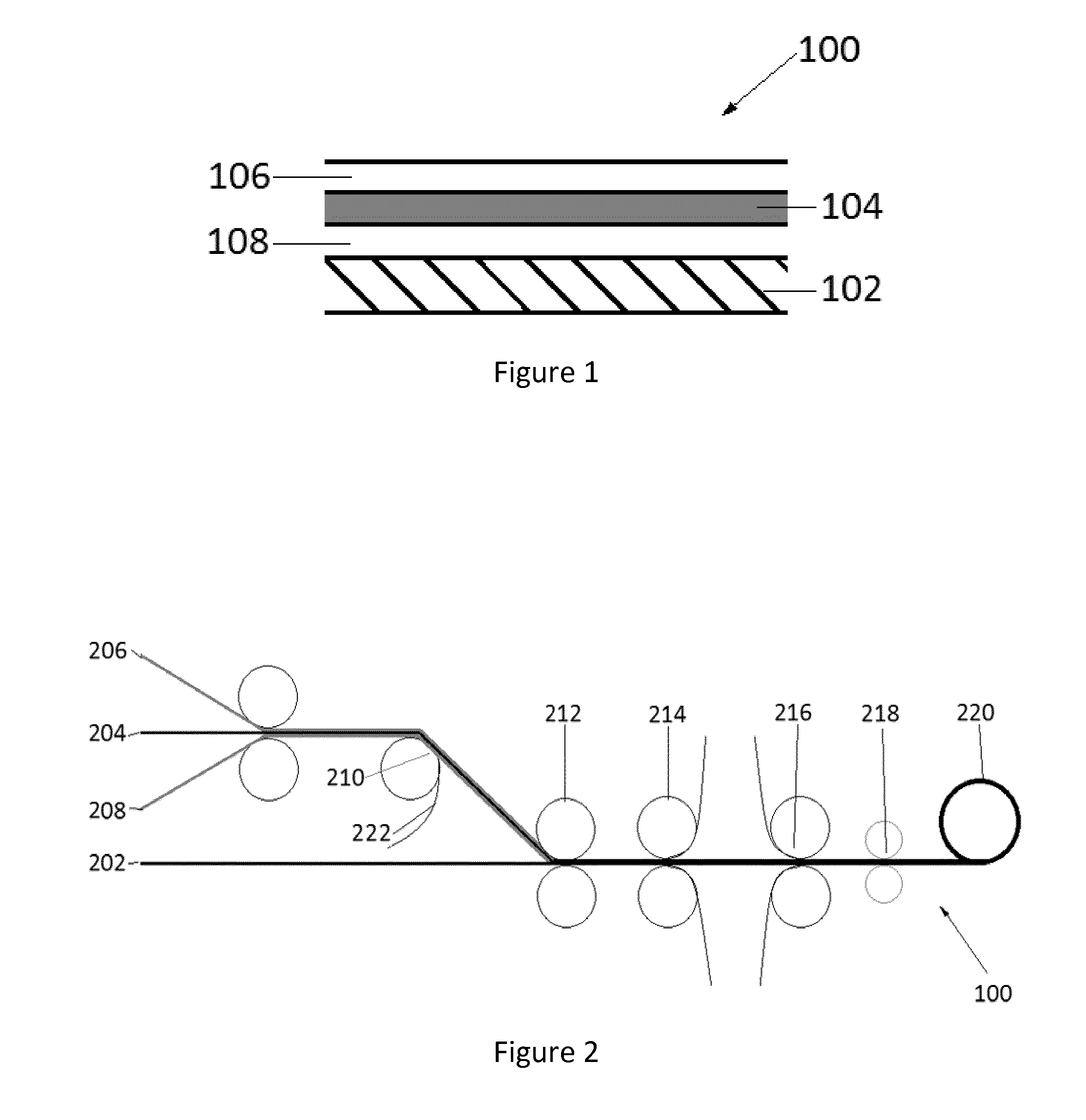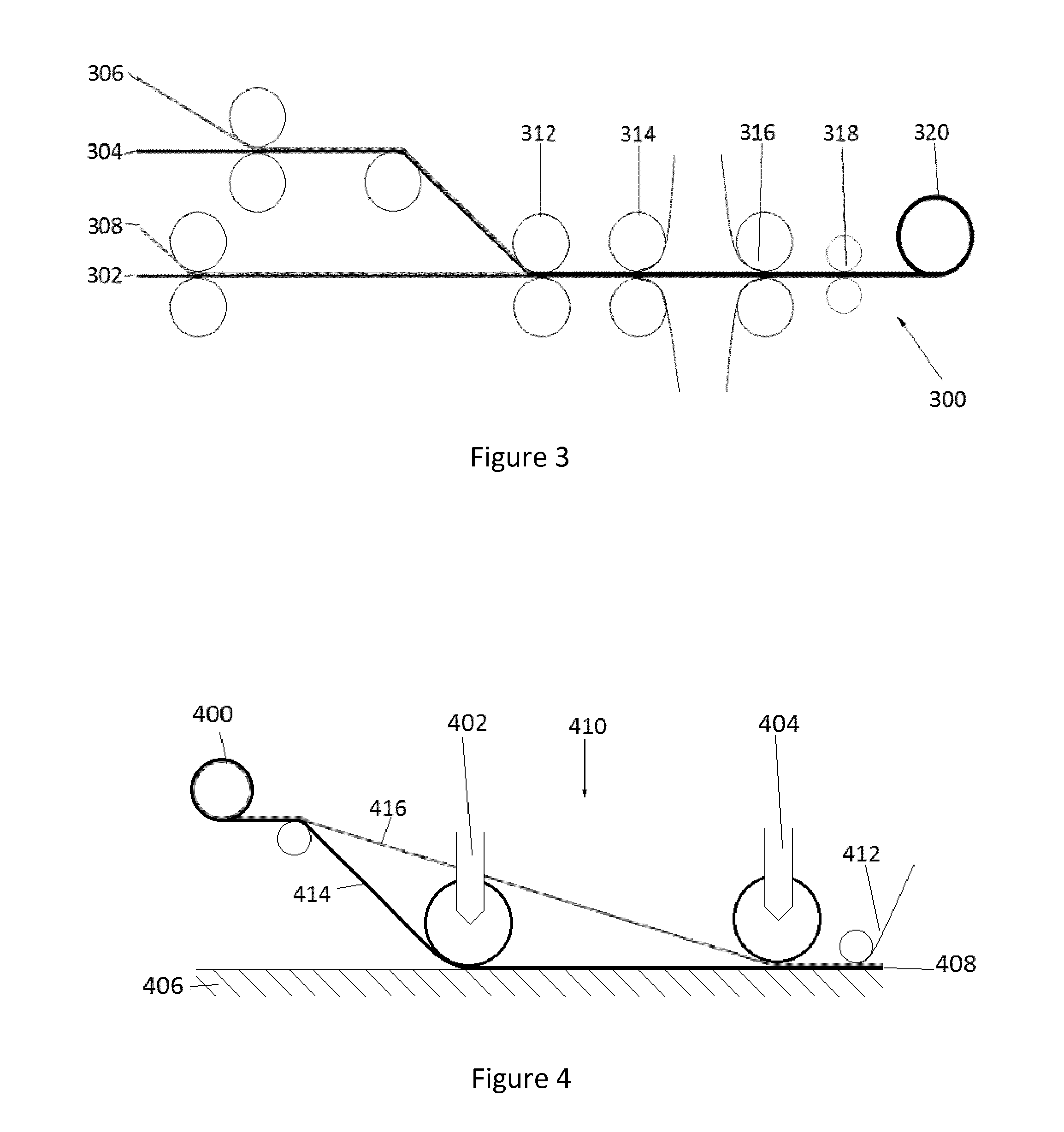Composite material
a composite material and material technology, applied in the field of composite materials, can solve the problems of high tension used in atl layup, unsuitable damping materials, and high pressure used in the production of existing materials, so as to improve damping and improve the damping performance of composite materials
- Summary
- Abstract
- Description
- Claims
- Application Information
AI Technical Summary
Benefits of technology
Problems solved by technology
Method used
Image
Examples
example 2
[0075]Smacwrap® ST (supplied by SMAC SA, France) of 0.1 mm thickness was laminated to M21EV / 34% / 194 / IMA prepreg (Hexcel Composites SA, France) using a pair of 12″ consolidation rollers. The prepreg had sufficient surface resin to tack the Smacwrap® onto prepreg. A tackifying film of 10 g / m2 backed film resin (M21 EV, Hexcel Composites, France) was laminated onto the exposed surface of the Smacwrap layer using a further set of 30 cm (12″) consolidation rollers. The composite material was then cut into ATL compatible tape widths of 3.2 mm widths.
[0076]The tack of the final product was examined using the Texture Analyser method described above at a temperature of 23° C. and found to have a mean peak adhesion force of 6.5 N.
[0077]The tape was successfully deposited onto a mould surface using an ATL layup head. Subsequent layers of the tape were then applied. No obvious defects were present following visual inspection, suggesting the material of Example 2 is well suited for deposition by...
PUM
| Property | Measurement | Unit |
|---|---|---|
| elongation | aaaaa | aaaaa |
| elongation | aaaaa | aaaaa |
| temperature | aaaaa | aaaaa |
Abstract
Description
Claims
Application Information
 Login to View More
Login to View More - R&D
- Intellectual Property
- Life Sciences
- Materials
- Tech Scout
- Unparalleled Data Quality
- Higher Quality Content
- 60% Fewer Hallucinations
Browse by: Latest US Patents, China's latest patents, Technical Efficacy Thesaurus, Application Domain, Technology Topic, Popular Technical Reports.
© 2025 PatSnap. All rights reserved.Legal|Privacy policy|Modern Slavery Act Transparency Statement|Sitemap|About US| Contact US: help@patsnap.com



